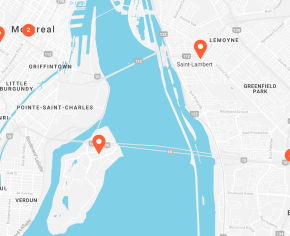The procedure is recommended for people 50 years of age or older who appear to be healthy but are at high risk for this type of cancer, including the following people:
- Those who have been smoking for a long time or have smoked for an extended period but have no signs or symptoms of lung cancer
- People with chronic obstructive pulmonary disease
- Those with a family history of lung cancer
- People who have been exposed to asbestos at work
During this procedure, a device called a "low-dose axial CT scanner" produces detailed images of the lungs. It allows us to identify the size and location of abnormalities or nodes on the lungs, even very small ones. A radiologist studies the images and sends a full report to the attending physician.
Procedure process
CT lung screening is non-invasive, quick, and painless. For the procedure, we will ask you to do the following:
- Remove any metal objects, such as jewelry, eyeglasses, hearing aids or dentures, and not wear underwire bras or clothing with metal buttons. We may ask you to put on a hospital gown.
- Lie comfortably on the table and remain still. The table will slide into the CT scanner.
- Hold your breath for a few seconds while we carry out the procedure.
If necessary, speakers built into the CT scanner allow you to communicate with the technologist during the procedure. In addition, a glass window allows the technologist to see you at all times. During the procedure, the device makes clicking and whirring noises while capturing images—this causes no discomfort. The room might be a little cool to ensure the CT scanner performs optimally.
Keep in mind that the total time of your visit will be approximately 30 minutes, although the actual procedure only lasts a few minutes.
Preparing for the procedure
Before booking a CT lung screening scan, tell your doctor if you have an airway infection, which may appear as an abnormality on the CT scan. If this is the case or if you have recently recovered from such an infection, it may be advisable to delay your screening.
If confined spaces cause you a lot of anxiety or nervousness, you may be able to take a sedative, which you should arrange before the procedure. If you are having the procedure, be sure to have someone with you, as you will not be able to drive that day. Otherwise, there are no restrictions after the procedure—you can resume your normal activities.
A medical prescription is required to perform this examination. The cost of this examination is not covered by the Régie de l'assurance maladie du Québec (RAMQ).
If your health care professional has prescribed this test for you or you have any questions, please call us at 1-833-590-2714.

